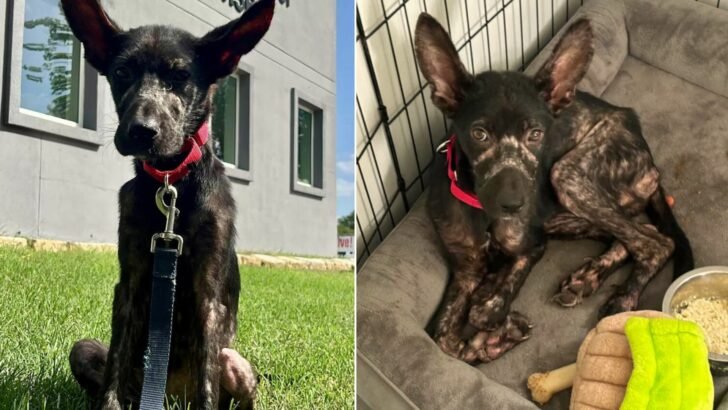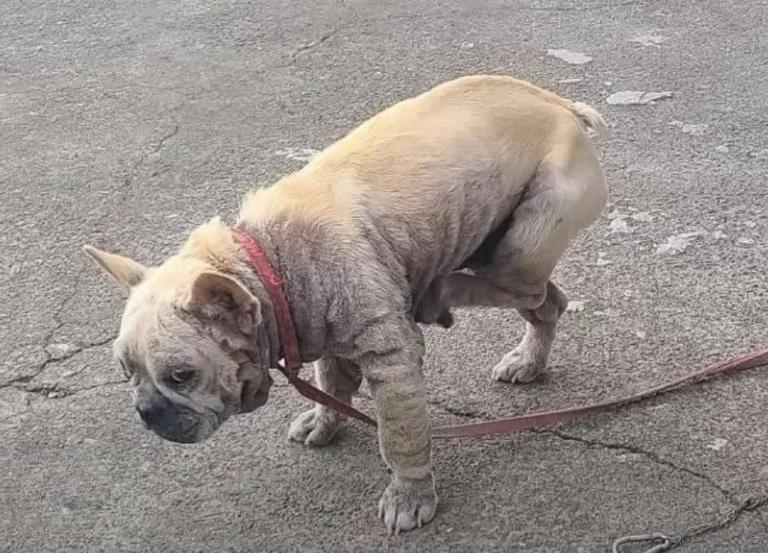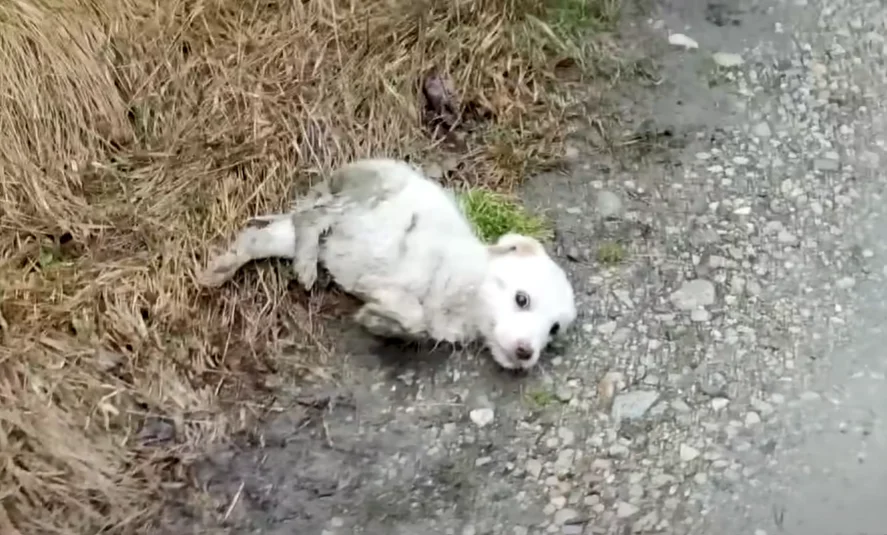The first time I saw him, he was little more than a shadow behind a rusted chain-link fence. His icy blue eyes shone with fear rather than the majesty huskies are known for. His once-beautiful coat was dull, caked with dirt, and matted in places. His ribs were visible beneath his skin, his body a testament to neglect. The chain around his neck was thick and heavy, cutting into his fur, and the ground around him was barren of comfort—no food, no water, just hard-packed dirt.
He had been abandoned in this condition for who knows how long, left behind in the backyard of a foreclosed home. The neighbors said he had once been a playful pup, but over the years, as the family fell on hard times, he became less of a priority. Eventually, they moved away, leaving him behind as though he were another piece of discarded furniture.
When I approached the fence, his body stiffened. He growled low, a warning born of fear rather than aggression. His eyes darted around, scanning for an escape that didn’t exist. It was clear he had learned to expect the worst from people.
I crouched down, speaking softly. “Hey there, boy. It’s okay. I’m here to help.” I tossed a piece of chicken through the fence and backed away. He eyed it warily before inching closer, his movements slow and deliberate. He sniffed the offering, then snatched it up and retreated to his corner, chewing quickly as though he feared someone might take it from him.
Over the next few days, I returned with food and water. Each time, I spoke gently and kept my movements slow. Gradually, his growls turned into cautious silence. On the third day, I noticed his tail wag—just a tiny flick, but it was enough to give me hope.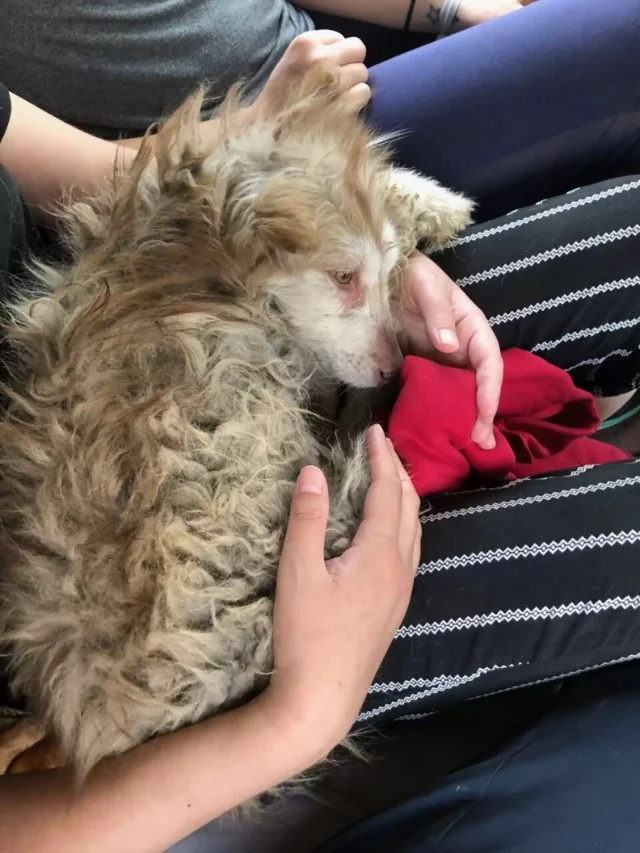
The day we cut the chain from his neck was one I’ll never forget. With the help of a rescue group, we worked to gain his trust enough to approach him. He was terrified, his body trembling as we moved closer. But when the bolt cutters snapped through the metal, and the heavy chain fell away, he froze for a moment, as if he couldn’t believe it. Then, for the first time, he stepped forward willingly, his eyes meeting mine with a glimmer of something new: trust.
I brought him home that day, unsure of what to expect. He was still scared, flinching at sudden movements and cowering when I raised my hand to scratch my head. But he followed me through the door, his steps hesitant but determined.
Naming him was easy—Freedom. It suited him, not just for what he had gained but for what he symbolized.
The weeks that followed were a journey of patience and discovery. Freedom had to learn what love felt like. He didn’t understand toys or treats at first, staring blankly at the ball I rolled toward him. But he quickly discovered the joy of a warm bed, the comfort of a full belly, and the safety of gentle hands.
He began to blossom. His fur grew soft and shiny, and his ribs disappeared beneath a healthy frame. His fear gave way to curiosity, and his tail wagged more often. He started to greet me at the door, his whole body wiggling with excitement. And the first time he howled—a deep, joyful sound—I couldn’t help but laugh and join in.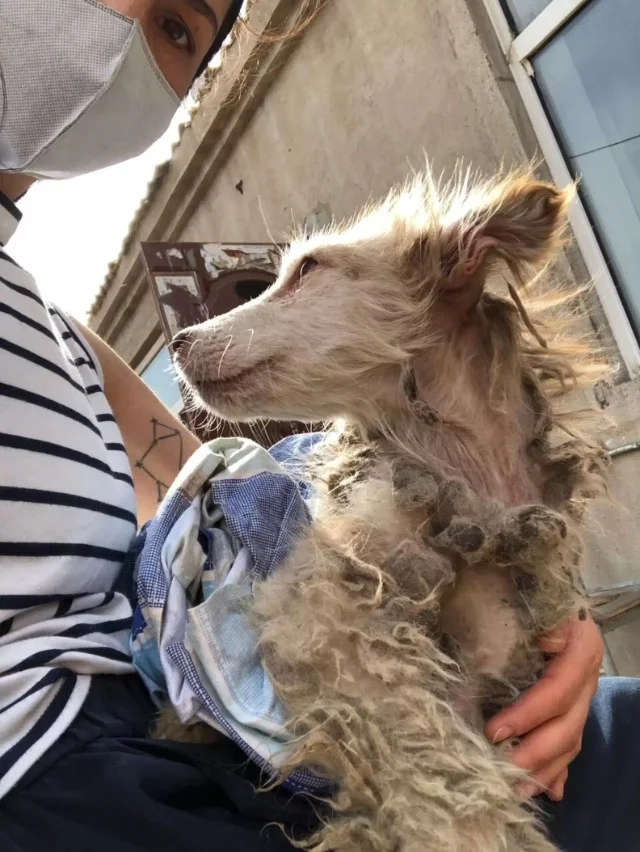
Freedom’s transformation wasn’t just physical—it was emotional. He learned to trust again, to play, to love. He even made friends with the neighborhood dogs, his confidence shining brighter with each passing day.
Now, when I see him running through the park, his tail high and his eyes sparkling with joy, it’s hard to believe he’s the same dog I found behind that fence. Freedom’s journey is a testament to resilience and the healing power of love.
Every time he looks at me, I’m reminded of the promise I made the day I cut that chain: to never let him feel abandoned again. And every wag of his tail tells me he knows he’s finally home.


